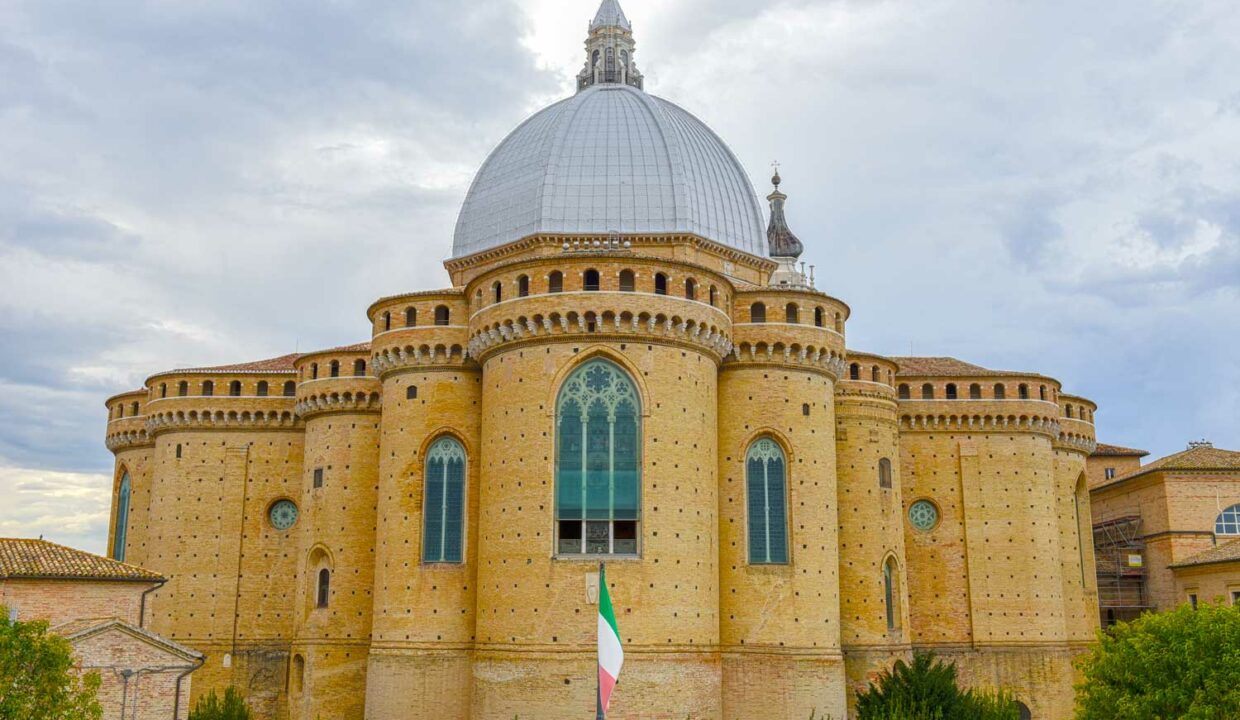
The Marche is a region that boasts numerous wonders, and among them the splendid city of Loreto stands out: a veritable jewel set in the Marche hillsides, in the province of Ancona.
Loreto is one of the most important locations in the world for Catholic pilgrimage, since the sacred Sanctuary of the Holy House is located precisely here, defined by Pope John Paul II as the “Marian Heart of Christianity“.
Let’s look at the history of this wonderful town and its Sanctuary together.
A Short History of Loreto
The history of Loreto, a town of just over 12 thousand inhabitants, is inextricably intertwined with the presence of the Sanctuary, the well-known Basilica that holds the relic of the “Holy House” of Nazareth, the place where Mary was born and where she received the Archangel Gabriel’s Annunciation.
In fact, its development over time is thanks to the advent of the relic itself. The first real mention of Loreto dates back to the first half of the fourteenth century, with the name of Villa Loreti, the place where the faithful would visit. Gradually, thanks to donations from the Papal State, protective walls were built, so as to create a fortified quadrilateral.
The Basilica of the Holy House, to give the Sanctuary of Loreto its full name, is located in Piazza della Madonna and is known as the Pontifical Minor Basilica. More than 200 saints and popes have visited here. Inside one can view, in addition to the Sacred Relic, a unique set of works of art and examples of architecture of the highest standard.
Of course, in the entire history of the Santa Casa there is really only date that counts: the night between 9th and 10th of December 1294, when a small stone building appeared on the hills near Recanati: it was The House of Mary. But why did it end up here?
The Legend of the House of Loreto
Legend has it that when the Crusaders retreated from Palestine a few years earlier, they transported the House to Croatia, where it remained until 1294. Here, however, it was not protected and venerated enough, so they decided to transport it by sea to Recanati, and onto land owned by a woman named Loreta.
Some say that the House was dismantled into blocks and then reassembled here by the Crusaders, while others say that it was moved as it was. A further certain detail is that, studying the architecture of the House, the stones used in its construction are typical of Palestine, as is the mortar that holds them together.
Loreto Today
Today Loreto no longer consists of just the splendid Sanctuary which, in any case, deserves an in depth visit. The Piazza della Madonna alone, in which it is located, is an extraordinary example of architecture that is well worth the experience.
Inside, to the north-west, there is the Apostolic Palace, with its Pinacoteca and a majestic portico designed by Bramante. To the south stands the Illyrian Palace, dating back to the second half of the 1500s, which for years hosted students from Albania and Dalmatia (ancient Illyria, hence its name). Finally, the splendid Maderno Fountain and the Vanvitelli Bell Tower.
In short, Loreto is a small, internationally appreciated gem that certainly merits a visit and which, with its surrounding countryside, offers breath-taking views and easy relaxation not only for holidaying but also for those wishing to settle here permanently.



